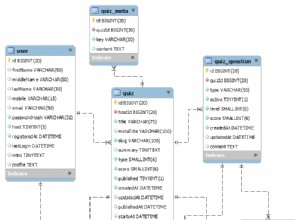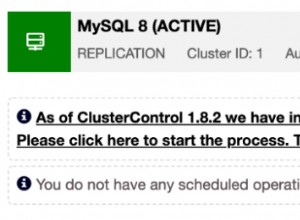C'est moche, mais ça marchera :
ORDER
BY SUBSTRING_INDEX(CONCAT( col ,'.'),'.',1) + 0
, SUBSTRING_INDEX(SUBSTRING_INDEX(CONCAT( col ,'.'),'.',2),'.',-1) + 0
, SUBSTRING_INDEX(SUBSTRING_INDEX(CONCAT( col ,'.'),'.',3),'.',-1) + 0
, SUBSTRING_INDEX(SUBSTRING_INDEX(CONCAT( col ,'.'),'.',4),'.',-1) + 0
, SUBSTRING_INDEX(SUBSTRING_INDEX(CONCAT( col ,'.'),'.',5),'.',-1) + 0
, SUBSTRING_INDEX(SUBSTRING_INDEX(CONCAT( col ,'.'),'.',6),'.',-1) + 0
, SUBSTRING_INDEX(SUBSTRING_INDEX(CONCAT( col ,'.'),'.',7),'.',-1) + 0
Pour tester ces expressions, vous pouvez les utiliser dans un SELECT et vérifier qu'elles extraient les bons composants et qu'elles sont correctement ordonnées :
SELECT col
, SUBSTRING_INDEX(CONCAT( col ,'.'),'.',1) + 0 AS p1
, SUBSTRING_INDEX(SUBSTRING_INDEX(CONCAT( col ,'.'),'.',2),'.',-1) + 0 AS p2
, SUBSTRING_INDEX(SUBSTRING_INDEX(CONCAT( col ,'.'),'.',3),'.',-1) + 0 AS p3
, SUBSTRING_INDEX(SUBSTRING_INDEX(CONCAT( col ,'.'),'.',4),'.',-1) + 0 AS p4
, SUBSTRING_INDEX(SUBSTRING_INDEX(CONCAT( col ,'.'),'.',5),'.',-1) + 0 AS p5
, SUBSTRING_INDEX(SUBSTRING_INDEX(CONCAT( col ,'.'),'.',6),'.',-1) + 0 AS p6
, SUBSTRING_INDEX(SUBSTRING_INDEX(CONCAT( col ,'.'),'.',7),'.',-1) + 0 AS p7
FROM mytable
ORDER BY 2,3,4,5,6,7,8
Plutôt que d'expliquer comment cela fonctionne, je vais simplement aborder les "astuces" importantes
-
ajouter un "." à la fin du col, vous en avez besoin pour ne pas revenir plusieurs fois à la dernière position,
-
utilisez SUBSTRING_INDEX pour récupérer la partie jusqu'au nième '.'
-
utilisez SUBSTRING_INDEX pour en récupérer la partie finale (en lisant à l'envers, jusqu'au point de début
-
ajoutez zéro, pour convertir la chaîne en une valeur numérique




